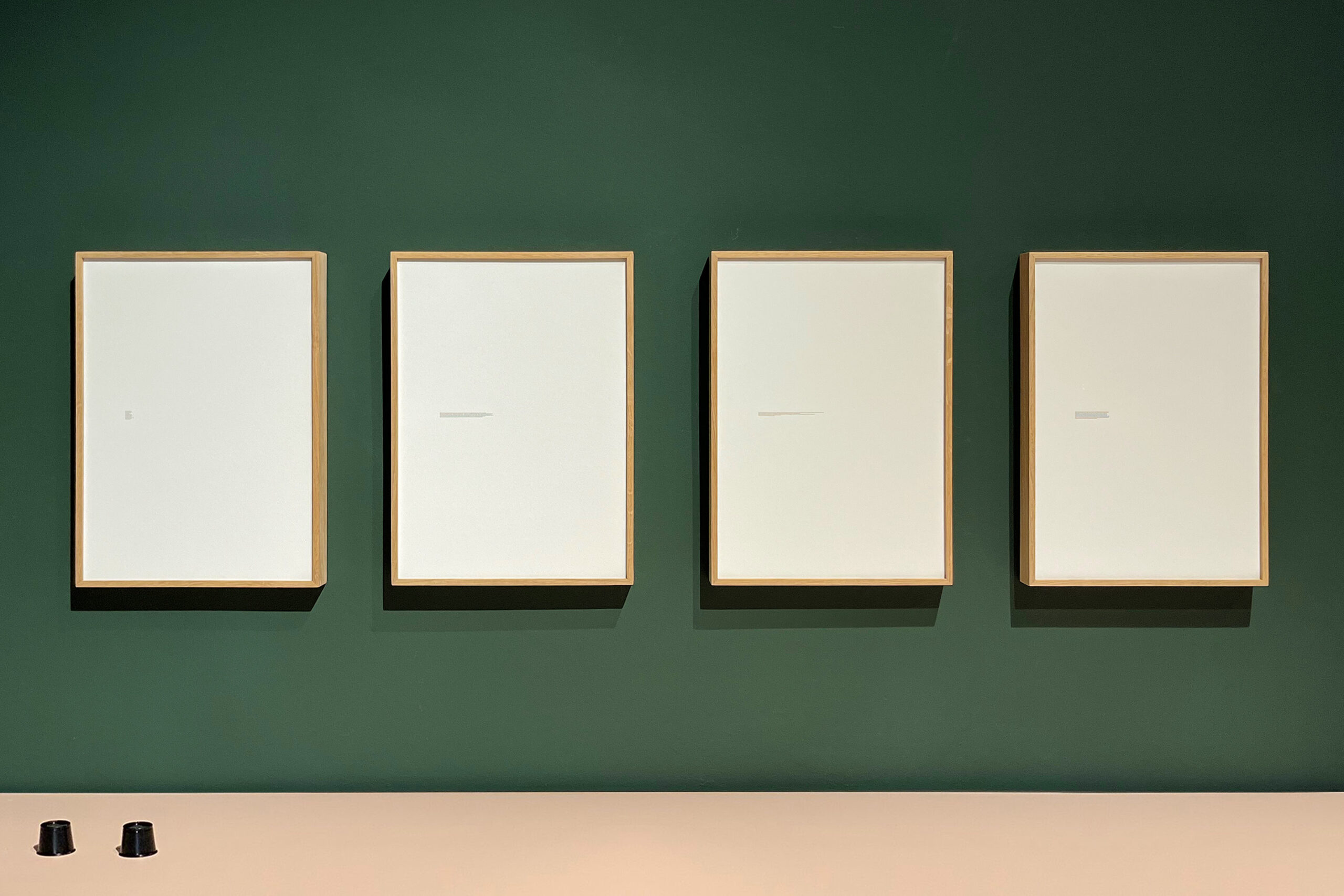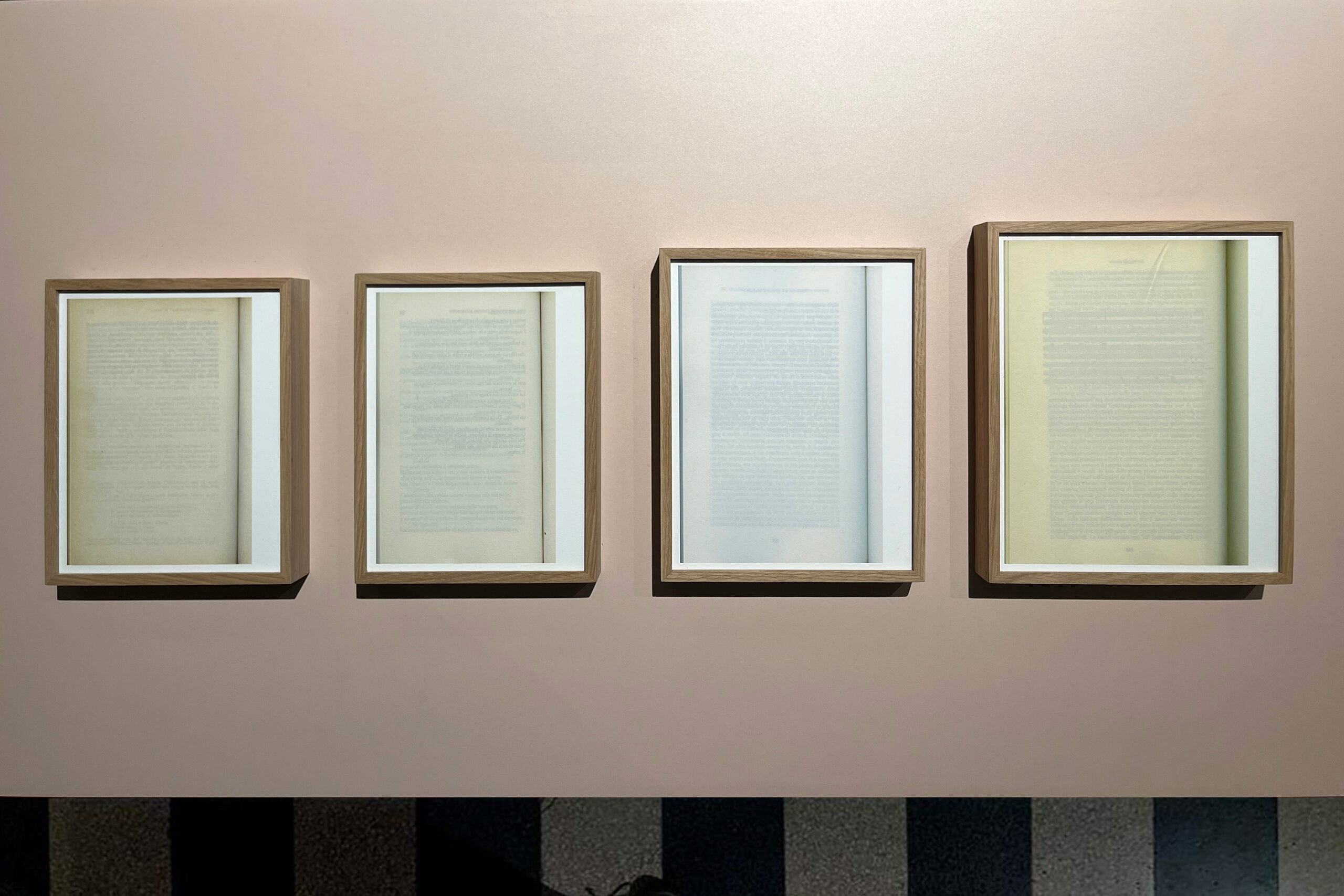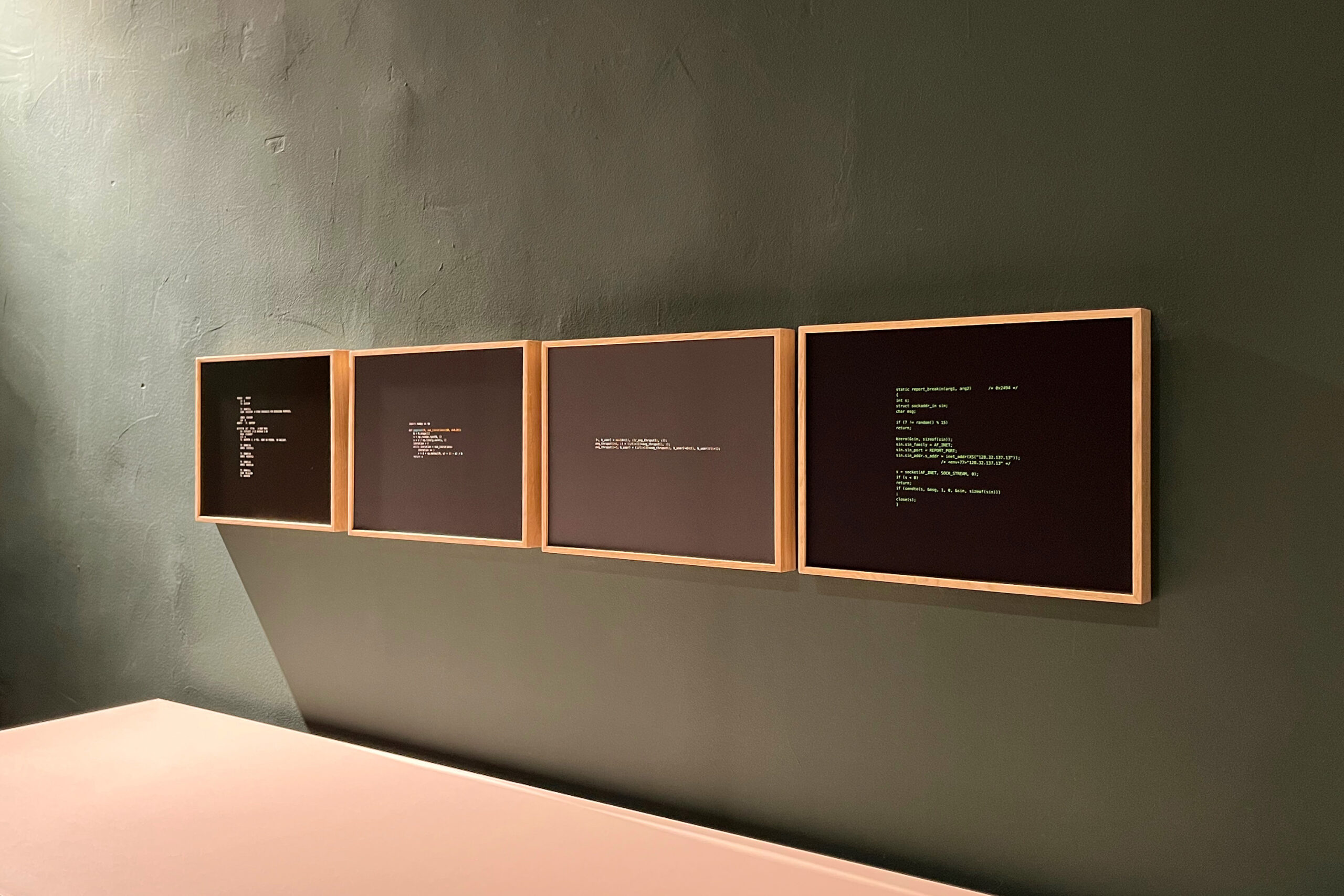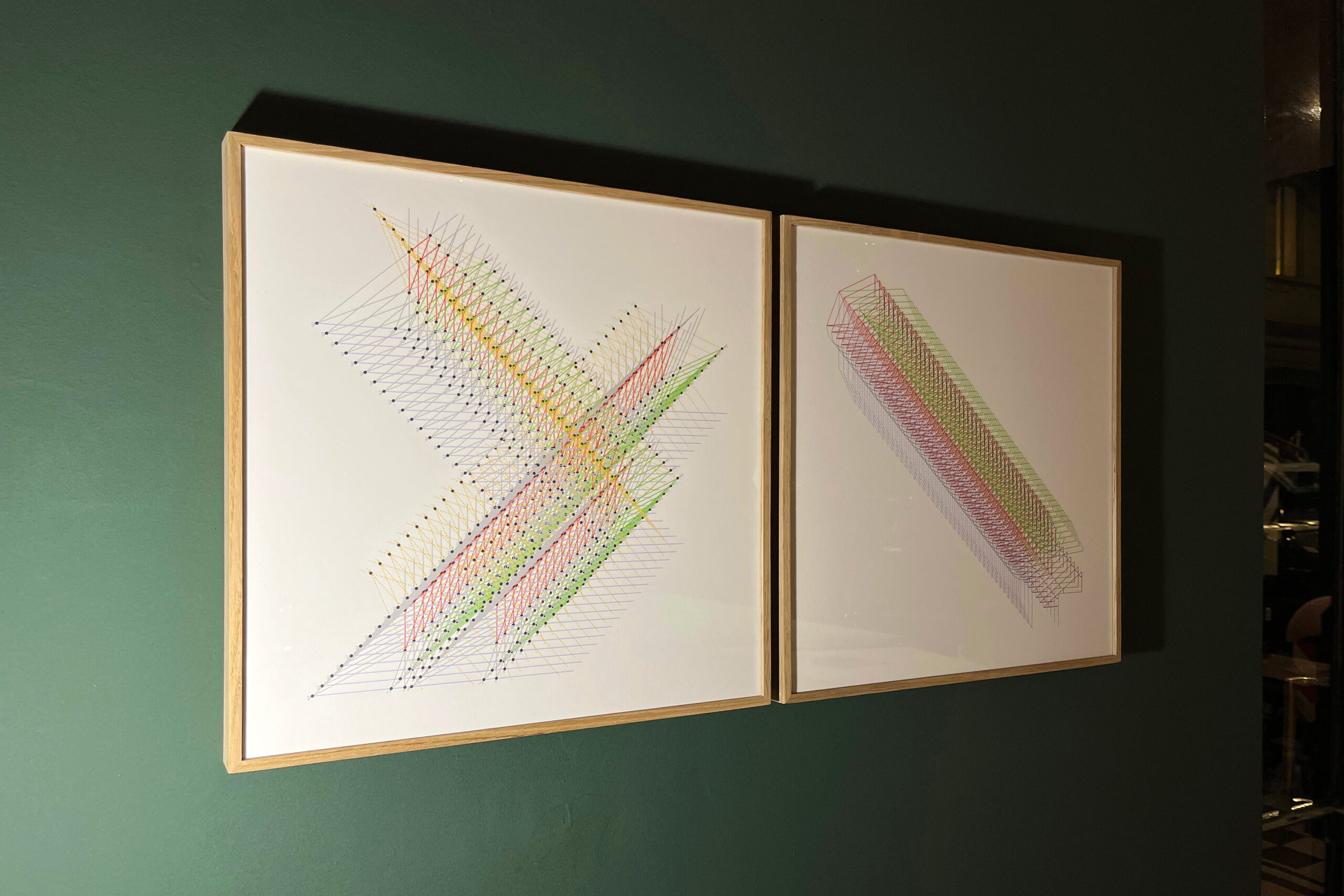04.11.2022 – 03.12.2023
Unit of measurement
Near. Far. Let’s face it, we’re trying. But we can’t always find the position. What does it mean? From where do you look at it? Where do I stand? What difference does it make? Often it seems like everything goes the same way. A great big river flowing in one direction. As if things always remained the same. At closer inspection, however, we are constantly moving and changes are constant. Variability and transformation determine our life. There are the facts, then the interpretations. These are some of the themes addressed by Paolo Inverni expanding on his poetics of measurability. Everything flows. You, what are you looking at? Facts, experiences, relations, things and their position. But also, at the attempts of saying something while admitting mistakes can still be made, suggests Inverni, shaping his work by insisting on analyzing limits and possibilities of representation.
What is it all about? In short, something that stands for something else. But saying that it’s a substitution is nothing but a partial solution. This is because there might be a problem to unravel (if we’re lucky) even with a single point. Even with that infinitesimal part that we are ready to say is unimportant. There lies the tangle, even in a single point.
Imagine our point is this [® °] and that it represents – or stand for – us in the space in which we are now. To say that the thin little circle is a point is debatable! What does it have to do with us? It doesn’t even look like us. And what does it mean, that it stands in our place? There you have it, we have opened our can of worms. Now, suppose that in that same space there are two of us, we would have: ° • . Suppose there is a group of people chatting away, we would have something like this: ° • ° • ° • ° • . Imagine that between them are a few things: ° • u °• v u ° • v ° • u . Or that, while chatting, someone happens to fall in love: ° ~° ® ∞ .
These are asterisks, lines and arrows: yet, they trigger a multitude of thoughts and words. A cosmos to be explored. In order to do so, Inverni carefully examines more than one relation: between meaning and signifier, structure and form, series and variables. With respect to the points on itself synthesizes this approach, rigorously dictated by needs of theoretical verification – an activity, for Inverni, that can be developed in the most disparate fields: from literature to linguistics, and from art history to computer science. An approach that favors evidence as much as interpretative coherence.
If there are flowers, we will have petals and leaves. There, on the floor. Not only on the corolla and on the stem. If there are flowers, they will live. They will smell nicely, they will wither. It’s almost too elementary. Instead, it is precisely in this ancestral candor that Inverni’s quest begins, with the intent of expanding the realm of language through aberrations of meaning and abbreviations of the codes he formalizes. Proximity and distance are not useful parameters of experience for those pages filled with unintelligible words and fragments of computer code: or to decipher fractals and words too small for the human eye. They are, rather, modes of presence, ours and that of other ornaments in the world.
That which Inverni proposes for this solo exhibition is, in fact, an investigation that aims to undermine seriality, interfere in the relations between syntactics and semantics, and reveal uncertain proximities. Not only a series of points. Or maybe so. Because Inverni examines their original dimension by questioning possible relations and contrasts. His choices resonate with the ‘erotics of art’ that Susan Sontag advanced as an antidote to the hermeneutics that Inverni, instead, considers to be the primary outcome of his measurements. Leaves are not the only things moved by the wind. So are we: it is poetry, that particular doing that is at the origin of art, making it all possible. Inverni knows this well and tells us in more than one way.
Davide Dal Sasso




